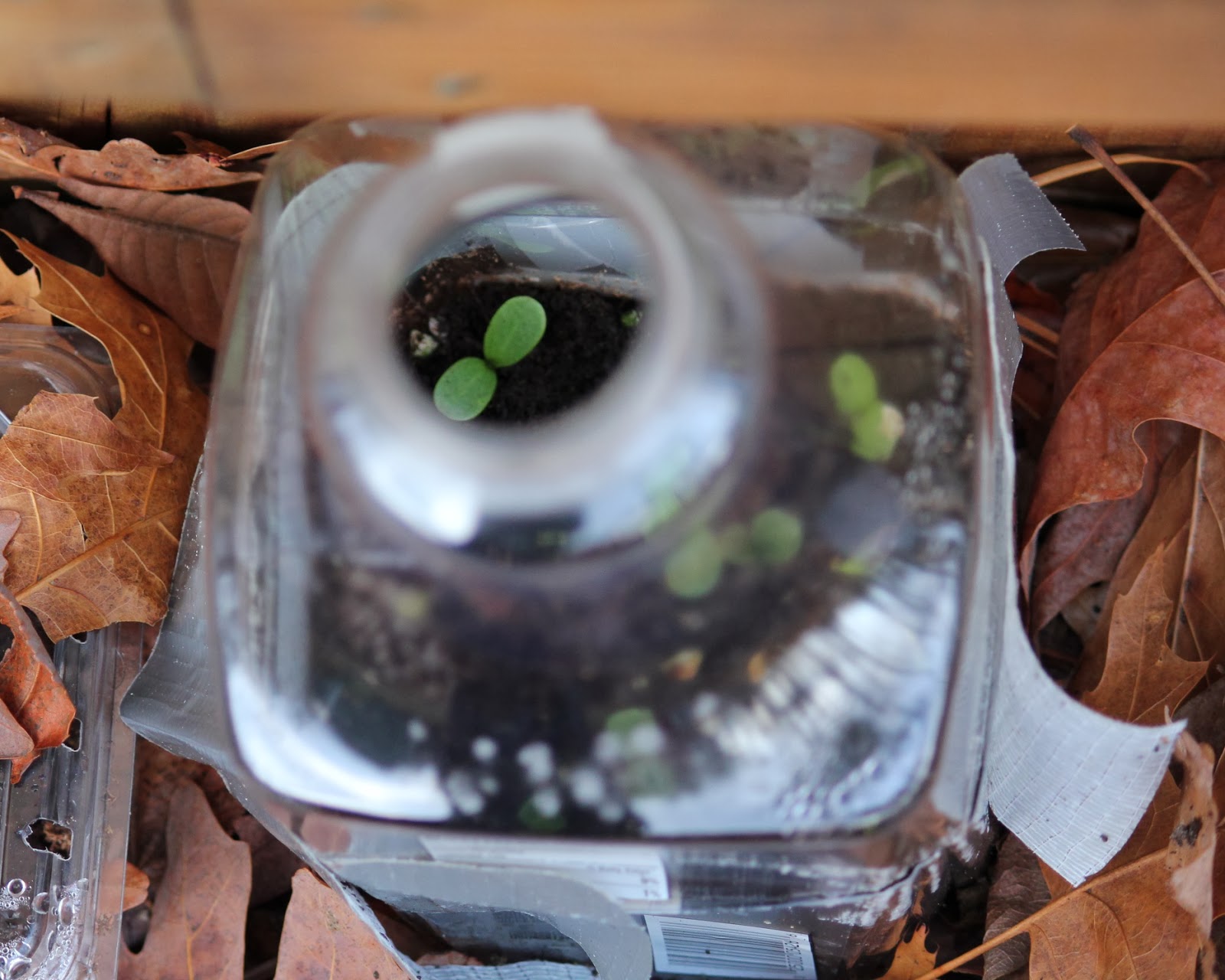 |
| the blossom of Nasturtium 'Empress of India', winter sown |
 |
| Winter sown seeds sprouting outside in a recycled juice container |
 |
| winter sowed Balloon flower |
So how do you winter sow seeds?
1. Cut clean milk jugs or juice bottles in half. You can also use plastic containers such as salad boxes, just make sure to cut holes in the top for ventilation. (You don't want to cook your seeds.)
2. Cut holes in the bottom for drainage. (I use a screwdriver or a big nail to puncture holes.)
4. Sow your seeds. Plant them at the required depth, or if they need light to germinate, just gently press them into the soil.
5. Duct tape the top back on, and label. (I label them in a couple places, as even permanent marker can fade over time.)
6. Put outside in a sheltered spot. Check on them occasionally to see if they need more water, especially after the seeds germinate and the seedlings start to grow. As the seedlings get bigger, cut bigger holes in the top or crack the top a little bit to finish hardening them off.
 |
| Look at those roots! These plants want out! |
7. Once the seedlings get big enough, transplant them where you want them! Make sure to protect from frost if needed.
 |
| One of my Lanceleaf Coreopsis plants I winter sowed. (I moved before I got to see them bloom, sadly.) |
I've had a great germination rate with winter sowing. The main problems I have run into was when I used too heavy of a soil (retained too much water) or used containers with too many holes (those berry containers will just dry right out!) For a lot more great info about winter sowing, as well as a lot of answers to FAQ's, WinterSown.org and GetBusyGardening.com are two good resources.
 |
| winter sown Candytuft |
Happy Gardening!


